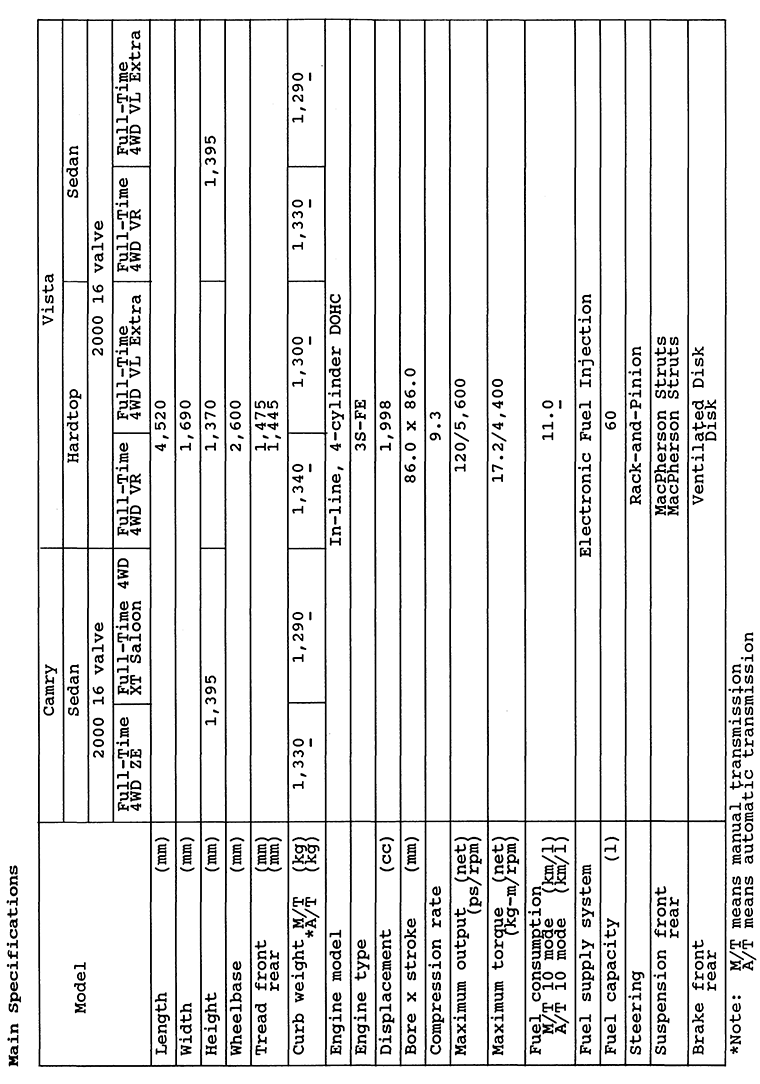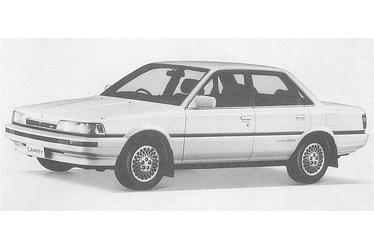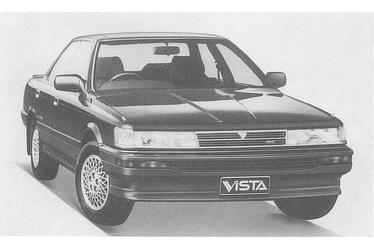Oct. 02, 1987
TOYOTA ADDS FULL-TIME 4WD MODELS TO VISTA AND CAMRY LINES

CAMRY FULL-TIME 4WD 2000 ZE

VISTA FULL-TIME 4WD 4-DOOR HARDTOP 2000 VR
Toyota City―TOYOTA MOTOR CORPORATION announced the addition of full-time 4WD (four-wheel drive) models to its Vista 4-door sedan and 4-door hardtop series and its Camry 4-door sedan series, Toyota's top-of-the-line front-wheel-drive saloons. The new models will be released in Japan nationwide on October 20.
Toyota has developed the new full-time 4WD models to assure consistently excellent operation under all weather and road conditions. They are full-time 4WD models with a center differential that continuously transmits power to all four wheels. Models with an ideal combination of the 4WD and the A.B.S. (Anti-lock Brake System) use a viscous coupling for their *center differential control system. This assures stable running performance by automatically limiting the differential function between the front and rear axles depending on the driving conditions. Models without the A.B.S. use a mechanical-lock type that stops the function of the center differential when the differential control switch is operated. With this, the driver can easily get out of mud or bad roads. The new models also mount the 3S-FE type, twin-cam 16-valve engine that has been evaluated highly for its excellent performance over all rpm ranges.
- Major Features
-
- Adoption of Full-time 4WD with Center Differential
- Mechanism of the center differentialBecause both front and rear axles of the 4WD vehicles are traction axles, a revolutional difference between the front and rear axles occurs in cornering. The full-time 4WD models of the Vista and Camry adopted center differentials to absorb the revolutional difference, facilitating smooth driving even when tight-cornering, while continuously transferring power to four wheels.
- Center Differential Control SystemThe center differential control system uses either a viscous coupling or mechanical lock, depending on the model.
- Viscous couplingA viscous coupling is used for models with the A.B.S. feature that provides greater stability in braking. When the rotational difference between the front and rear axles increases, the viscous resistance that occurs between the silicone fluid and the large number of metallic plates within the viscous coupling automatically limits the function of the center differential. The differential control function of the viscous coupling automatically operates while driving under snowy road conditions or while starting or accelerating, and an appropriate amount of driving force is distributed to the front and rear axles. The viscous coupling guarantees superior running performance at all times.
- Mechanical LockOther models without A.B.S. use a mechanical lock. In this system, the driver can stop the function of the center differential manually using the differential lock switch in the cabin. This then connects the front and rear axles directly and transmits driving force to the four wheels, enabling the driver to easily maneuver through muddy, bad roads.
- Viscous coupling
- Mechanism of the center differential
- Adoption of Full-time 4WD with Center Differential


- 3S-FE Type, Twin-cam 16-valve EngineThe new models come with the 3S-FE type, twin-cam 16-valve engine, which has been lauded for its high power output, low fuel consumption and high torque in the low to medium rpm range.
- Highly Improved SuspensionsThe front and rear suspensions in the new Vista and Camry are provided with stabilizers that improve cornering stability. All 4WD models are also equipped with 4-wheel disk brakes, ventilated in front, for excellent braking performance.
- *Note
-
- Center Differential Control System
- A full-time 4WD vehicle with a center differential shows excellent running performance under ordinary circumstances, but if one wheel is stuck in mud or off the ground, power may occasionally not be transmitted to the other three. Under those conditions, the differential control system limits the function of the center differential so that adequate driving force is transferred to all four wheels.







